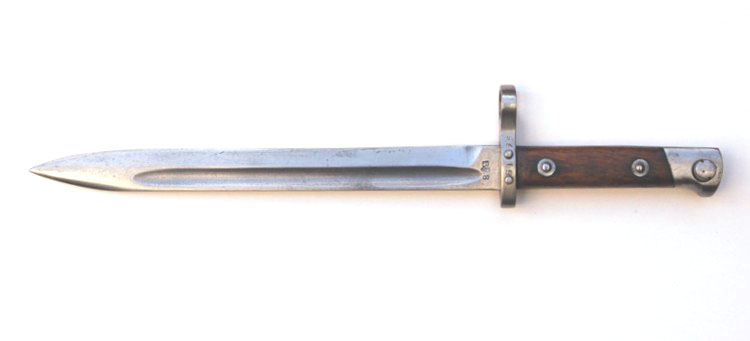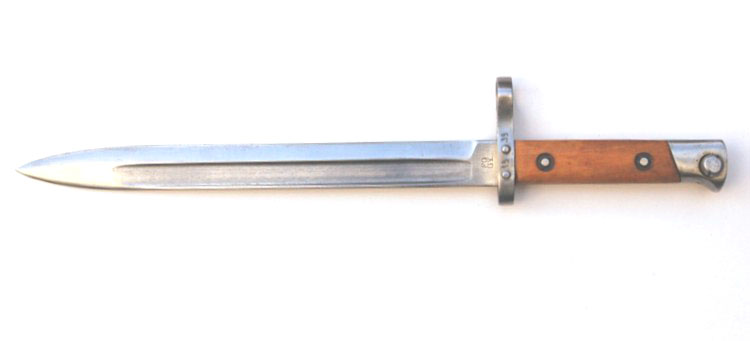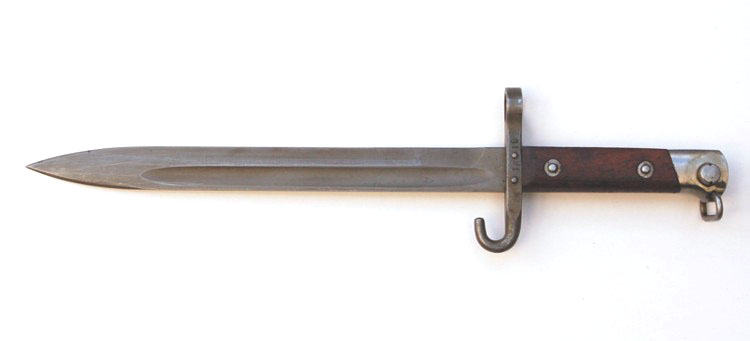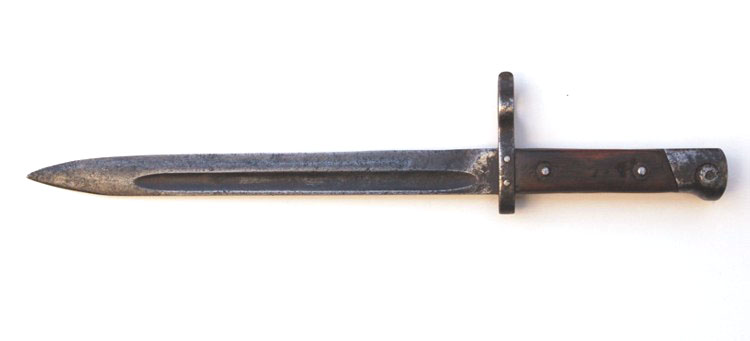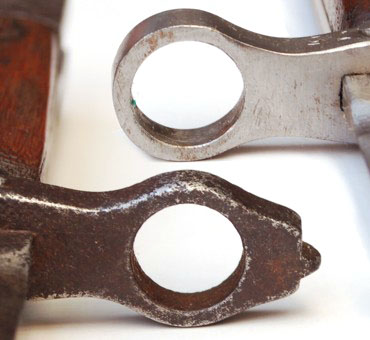
| M1895 "Steyr-Mannlicher"
Technical data : Total length : 358 mm Was used on : M1895 "Steyr-Mannlicher", M1895 "Steyr-Mannlicher" Karabiner
General information : The immense Austrian-Hungarian army was equipped with the M1895 rifles and carbines, which were fitted with this short and practical bayonet. What is typical for the M1895 bayonet is the “upside-down” position of the blade, something what was later applied to the VZ23 and VZ24 bayonets as well. This would make the bayonet more effective as it is easier to apply an upwards force than to push the rifle downwards.4 major patterns of the M1895 bayonet exist from which the standard version (no hooked quillon nor loop through the pommel nor Hilfskorn) is of course the most frequently encountered. The version with quillon and loop, which allowed a Troddel to be fitted, was destined to be used by non commissioned officers. A further variation featured a Hilfskorn, an additional front sight on the muzzle ring for use on the M1895 carbine. The last, and least encountered version, is the one with a Hilfskorn, quillon and loop. The German Ernst Busch company, established in Solingen, has made M1895 bayonets as well. Most, if not all of them, bear the Prussian mark “W” over “17” which stands for acceptance in the Prussian army in 1917. Several explanations for this are possible but they could be meant for German troops which were sent to the Eastern Front to assist the Austrian-Hungarian Army. These German soldiers could have been armed with the M1895 to facilitate the interchangeability of weapons, spare parts and ammunition with the Austrian troops. Known makers : FGGY, (Femaru-Fegyver és Gépgyar), Budapest (can be recognised by the square corners of the fuller) Images.
© www.bajonet.be |
||||||||||||||||||||||||||||||
